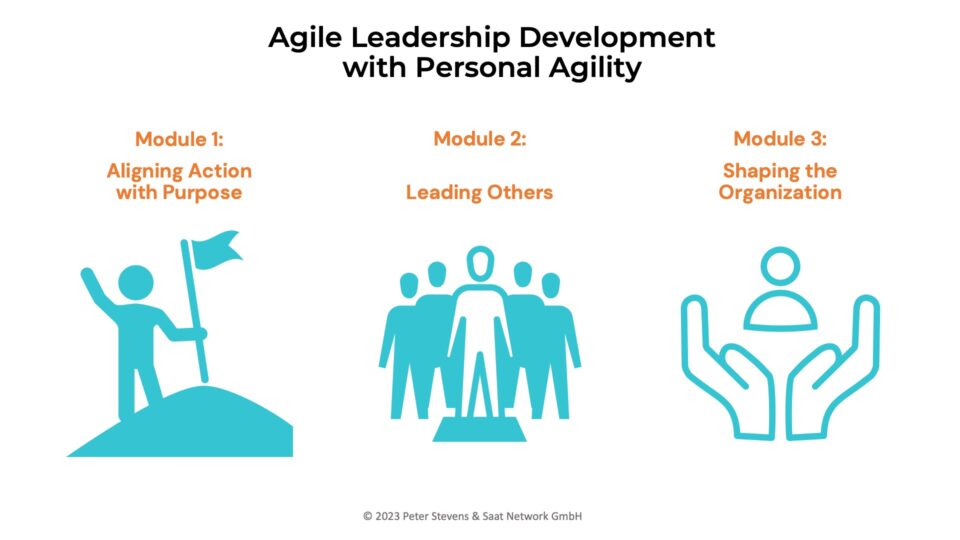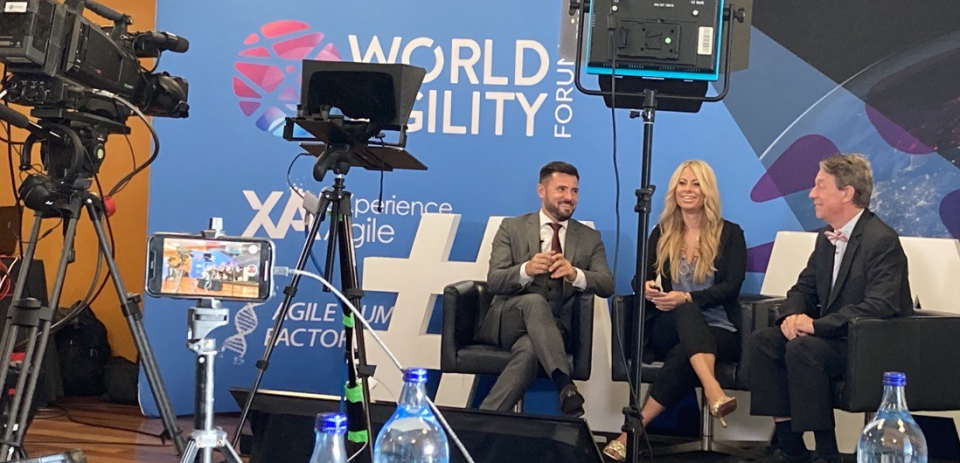Success Factors in a Scrum Sprint
14-03-2011Call for Participation: Lean Agile Scrum Conference Zurich 2011
21-03-2011I met Steve Denning on the Agile Business group at Yahoo! He had joined a discussion on the best way to get started with Agile and implement the change process.
A few months later, he asked for reviewers for his new book and I signed on. His “radical management” (sounded like ‘extreme programming’) struck me as a synthesis and extension of key patterns, principles and practices from Scrum and Lean (which I have been promoting for years), something new called Leadership Storytelling, and a sharp focus on delighting the customers. His book is written in clear language for people outside the IT and Automotive sectors.
It clicked immediately with me. When I heard about the Washington Gathering, it was clear that I had to go! What does Steve say about Agile?
I believe that (genuine) Agile is a better way of managing and a great breakthrough in terms of management innovation.But for this to be recognized and for Agile to have its rightful place in the overall scheme of things, it needs to be communicated so that people outside the world of software understand it, believe in it and and want to have it, rather than close it down as an unintended accident of a mindless cost-cutting exercise.
— Steve Denning, writing in Agile Business, July 10, 2009
In preparation for the Washington Gathering, I asked Steve to explain some of key concepts of Radical Management.
What is leadership storytelling?
Leadership storytelling is a way of communicating ideas through narrative. It uses the natural power of storytelling to convey ideas quickly, easily and powerfully. Because people naturally understand the past through stories, think about the present in stories, plan the future through stories and make decisions through stories, leadership storytelling communicates with people in their native language. By contrast, abstract or analytic language is a kind of foreign language that is much less engaging.
In a business setting, the leadership stories that work best are typically short factual stories about something that actually happened and that illustrate the point that the leader is trying to make. The story enables people to get inside the idea and imagine themselves being involved in it so that the idea becomes part of their own repertoire of experience. The idea thus starts to become their own idea, which is the essence of leadership communication.
Why do leaders need to know about leadership storytelling?
Why storytelling? Nothing else works. Charts leave listeners dazed. Text remains unread. Giving reasons leads to arguments, not agreement.
When leaders are faced with the task of persuading a group of managers or front-line staff in a large organization to get enthusiastic about a major change, experience shows that storytelling is usually the only thing that works.
What led you to write ‘The Leaders Guide to Radical Management’?
Several years ago, I began examining why the traditional management that is prevalent in large organizations tended to kill the most creative activities, such as innovation, lean manufacturing, agile software development, marketing, knowledge management and even leadership storytelling. After all, these were the activities that would create the future for the organization. Yet in firm after firm, I watched as traditional management would kill these activities in the name of ever greater efficiency.
So I began looking for organizations that were doing things differently and instilling a culture that supported the creative activities in the organization. The book is about organizations that are doing exactly that. I discovered that these firms incorporated five big shifts, including a shift in the goal of the firm from making products and services to one of delighting the customer, a shift the role of managers from controllers to enablers, the use of dynamic linking rather than bureaucracy to coordinate work, a shift from value to values and a shift from command to conversation and storytelling. The book is about why they adopted these principles, how they have gone about implementing them, and what the results are.
Who has applied radical management principles?
Much of the most advanced thinking about radical management comes from software development, such as Agile and Scrum. Firms like Salesforce.com and Systematic Software (Denmark) are examples in software. Radical management means taking the principles of Scrum and Agile and adapting them to the whole business.
In manufacturing, Toyota and Thogus are examples. Apple (since 2001), Ford Motor Company (since 2006) and Amazon.com are exemplars among large global organizations.
The book gives many other examples of firms in a wide array of fields, including sales, marketing, venture capital, accounting and legal work.
How has implementing radical management changed their business?
Deloitte’s Shift Index indicates that traditional management is in steep decline. The rate of return on assets of US firms is one quarter of what it was in 1965. The life expectancy of firms in the Fortune 500 has declined from around 75 years half a century ago to less than 15 years. Only one in five workers is fully engaged in his or her work. Innovation remains a critical issue.
By contrast, radical management generates disciplined execution, continuous innovation, high staff commitment, and client delight.
Firms such as Apple, Amazon and Salesforce.com are experiencing exponential growth in sectors where competitors are struggling. Their ten-year share price tends to show increments of more than ten times, while firms deploying traditional management struggle even to maintain the same value.
For these reasons, the adoption of radical management is inevitable: the economics will drive the change. The question is not whether it will happen. The only question is when. Companies that do not adopt it will be unable to compete.
Why is the Gathering in DC so important?
The Gathering in Washington DC brings together practitioners from around the world to explore how to implement the principles of radical management. Unlike most conferences where participants listen to prepared speeches, the gathering will be organized so that the organizers and the participants can co-create the future, drawing on the experiences of the practice partners as well as the inputs from the participants themselves.
In effect, the participants will create what radical management means for their own context and then collaborate with the other participants to work through how they can implement it and overcome the constraints in their own setting.
I believe that the gathering will be a foundational event for the global movement to move from traditional to radical management, to shift the focus of firms from outputs to outcomes, and to transition from an inside-out approach in management to an outside-in perspective, focused on continuous innovation and customer delight.
You can join as at the Washington Gathering: Revolutionizing the World of Work. These two days, hosted by Steve Denning and Seth Kahan, will be dedicated to remaking the management mindset; that is, reinventing business, government, education, and health. I am proud to participate as a practice partner. Perhaps you will join us! If you are interested, check it out now as the early bird registration ($100 discount) expires March 31st. More information… Register…






2 Comments
Lovely interview. I wonder if the prevailing management culture, would be the biggest impediment to a successful transition to Scum way of working. Unless you have very determined and focused top management.
Hi srinivas C,
Thank you! Management (at all levels) creates the environment in which work gets done. Having management support is essential for a successful transition.
I agree with you, when top management does not subscribe to the same values and principles as their scrum teams, you have an organization which is in conflict with itself. This is why I got interested in Radical Management: to sensitize top management to the issues around and the importance of supporting the Scrum culture.